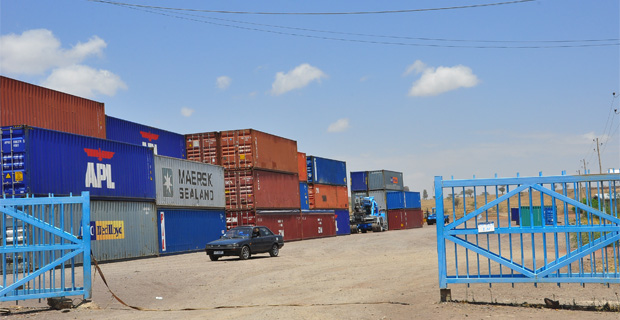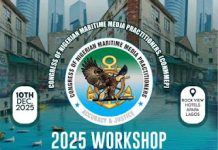Private terminal port operators at the nation’s seaports are facing difficulties in their operations as the cargoes they handle continue to decline. The challenges faced by the operators are daily compounded by the inability of most of them to procure dollars to meet their forex obligations, The Nation investigation has revealed.
The story is the same for a good number of the operators across the six major seaports in the country. At the Port and Cargo terminal at Tin Can Island Port Complex in Lagos, container throughput dropped by 10 per cent, while general cargo volume dropped by 50 per cent in the first half of the year, in comparison to the corresponding period of last year.
Also, Nigeria’s local currency, the naira, has depreciated by about 90 per cent in 18 months.
The Managing Director of Sifax Group – owners of Port & Cargo, John Jenkins, has attributed the huge drop in cargo volume at the port to forex scarcity.
“The inability of the government to generate the required foreign exchange to oil the wheel of the economy posed a great challenge,” Jenkins lamented, adding that apart from inability of importers to source forex to import cargo, “power is also a big challenge” at the port,” he said.
The situation at neighbouring Joseph Dam, Five Start Logistics and PTML terminals, also within the Tin Can Island Port Complex, appear even more pathetic.
PTML and Five Start have lost more than 70 per cent of their RoRo vessel and cargo traffic due to the dollar scarcity and the fallout from the National Automotive Policy introduced by the immediate past administration in 2014.
The policy, which raised the tariffs on imported vehicles from 20 per cent to 70 per cent, has led to the diversion of more than 50 per cent of Nigerian-bound vehicle imports to the Port of Cotonou from where they are being smuggled into Nigeria.
A visit to Terminals A and B operated by Apapa Bulk Terminals Limited (ABTL), owed by Flour Mills Nigeria Limited, and Terminals C and D operated by ENL Consortium last week, showed that most of the berths were empty as some of the workers were seen idling away.
These facilities, which normally handle break-bulk and general cargoes, have reportedly lost about half of their vessel and cargo traffic to the prevailing economic hardship in the country.
Executive Vice Chairman/CEO of ENL Consortium, Princess Vicky Haastrup, confirmed that cargoes are fast disappearing from the once boisterous Lagos ports.
“The number of ships that I have handled from January till date, actually equals the number of ships I normally handle in a month. And what is responsible is simply not being able to have access to forex. It is a major constraint for everyone and that has affected cargo imports into Nigeria by at least 50 per cent,” she said.
The nation’s major container terminal operators, APM Terminals Apapa and Tin Can Island Complex are also faced with the low volume challenge.
Terminal operators in the ports outside Lagos have not fared any better. For instance, all the three major operators in Calabar Port put their capacity utilisation at a meagre 25 per cent.
The General Manager of Ecomarine Terminals, Kingsley Iheanacho, said the terminal no longer earn revenue from yard operations, as vessels and clearing agents have deserted the port, saying the terminal was just barely managing to remain afloat as it operates “skeletal services”.
“Presently, we are having 25 per cent utilisation and that is what Calabar port is all about,” he told Managing Director of Nigerian Ports Authority (NPA), Hadiza Usman, who visited the facility for the first time last week.
The Calabar Port Manager, Oluseyi Ogunbdele, confirmed the poor volume of cargo at the port.
In addition to the dollar scarcity and low volume, Calabar Port is battling other challenges such as low draft of the channel, the Ikom bridge which crosses over the channel thereby restricting the size of vessels that navigate through and the severely dilapidated road leading to the port.














